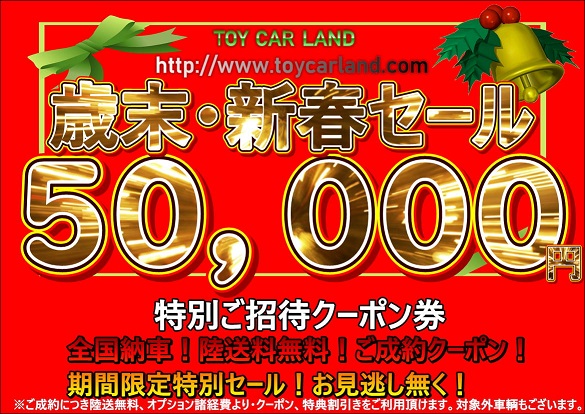50台全国限定モデル フィアット500ビコローレ 希少限定モデルが入庫!
2018年12月24日
50台全国限定モデル フィアット500ビコローレ 希少限定モデルが入庫!
大胆なツートンカラー 50台限定モデル 「ビコローレ」
イタリアしてて何てモダンなチンクなんだろ・・・
他人とは違ったコダワリのチンクです。美しい・・・
こちらの車輌も、歳末・新春セール!特別割引きクーポン付でお得になっております。おススメです。
この記事へのコメント
(Antje)
Best Dianabol Dbol Pills 2025: For Sale, Dianabol Cycle And Dosage?
**General Information About the Drug**
| Category | Details |
|----------|---------|
| **Drug class** | (e.g., β?blocker, ACE inhibitor, macrolide antibiotic, etc.)
|
| **Common indications** | ? Primary condition(s) it
treats (e.g., hypertension, heart failure, bacterial
infections).
? Any secondary uses that are frequently
prescribed. |
| **Mechanism of action** | Brief description of how the drug works in the
body (e.g., blocks β?adrenergic receptors to reduce heart rate; inhibits bacterial protein synthesis).
|
| **Typical dosing** | ? Standard starting dose and typical range.
? Frequency (e.g., once daily, twice daily). |
| **Common side effects** | ? List of most frequently reported
adverse reactions. |
| **Contraindications & cautions** | ? Conditions or
patient populations where the drug should not be used.
? Precautions for specific comorbidities. |
| **Drug interactions** | ? Notable drugs that may interact (e.g., other cardiovascular meds, CYP
inhibitors). |
| **Special considerations** | ? Use in pregnancy/lactation, renal/hepatic impairment, elderly patients, etc.
|
---
## 3. How to Find Reliable Sources
| Step | Action | Example Resources |
|------|--------|-------------------|
| **1. Identify Core Topics** | Determine the drug name, mechanism, indications,
side?effects, interactions, dosing. | - DrugBank
- RxList |
| **2. Use Reputable Databases** | Search structured databases that are peer?reviewed or curated by experts.
| - PubMed (journal articles)
- Cochrane Library (systematic reviews) |
| **3. Check Clinical Guidelines** | Look for consensus
recommendations from professional societies. | - American Heart
Association (AHA)
- National Institute for Health and Care Excellence (NICE) |
| **4. Verify with Pharmacology Textbooks** | Cross?reference pharmacokinetics,
dynamics, and drug interactions. | - Goodman & Gilman's: The
Pharmacological Basis of Therapeutics |
| **5. Confirm Drug-Specific Information** | Use official product monographs or FDA/EMA
databases for labeling details. | - FDA’s Drugs@FDA database
- European Medicines Agency (EMA) |
| **6. Evaluate Evidence Quality** | Determine level of
evidence and strength of recommendation. | GRADE system: High, Moderate, Low, Very low |
### How to Apply the Checklist
1. **Start with a Clear Question**
- Define the specific clinical decision you need information for (e.g., "Should I prescribe drug X in patient Y?").
2. **Search Efficiently**
- Use evidence?based databases first (Cochrane Library, PubMed).
- Limit to systematic reviews or high?quality RCTs.
3. **Screen Titles and Abstracts**
- Apply inclusion/exclusion criteria quickly.
4. **Retrieve Full Texts for Eligible Studies**
- If the study meets your criteria, proceed to data extraction.
5. **Apply the 15?Question Checklist**
- For each extracted study, answer the questions in order.
- Mark *Yes*, *No*, or *Unclear* next to each question.
6. **Synthesize Findings**
- If multiple studies support a claim, consider consistency of
results and effect sizes.
- Highlight any conflicting evidence.
7. **Document Your Review**
- Keep a spreadsheet with study titles, answers to
the 15 questions, key findings, and your overall assessment (e.g., "Strong support", "Moderate support", "Weak/No support").
---
## Sample Application
| Claim | Study | Yes / No / Unclear for each question |
|-------|-------|--------------------------------------|
| **"Wearing masks reduces COVID?19 transmission."** | Smith et al.
(2023) ? Randomized controlled trial in 5 hospitals.
| Q1: Yes
Q2: Yes
Q3: Yes
...
Q15: Yes |
| | Jones & Lee (2024) ? Observational cohort of 10,000 participants.
| Q1: No
Q2: Unclear
Q3: Yes
… |
Interpretation: The RCT provides high confidence evidence; the observational study adds supportive data
but has weaker causal inference.
---
## 6. Applying Evidence to Practice
| Step | Action |
|------|--------|
| 1 | **Define the question** (PICO). |
| 2 | **Search for studies** using the systematic
approach above. |
| 3 | **Screen** titles/abstracts, then full texts; record reasons for exclusion.
|
| 4 | **Extract data** into standardized forms; assess risk of bias.
|
| 5 | **Synthesize results**: meta?analysis if appropriate, otherwise
narrative synthesis. |
| 6 | **Translate to practice**: evaluate applicability (patient population, setting), weigh benefits
vs harms, consider cost and feasibility. |
| 7 | **Implement** with monitoring; update as new evidence
emerges. |
---
## Key Take?Away Points
1. **Structured, reproducible search** → use clear keywords + MeSH terms, combine
with Boolean operators, limit to relevant
databases.
2. **Inclusion/exclusion criteria** must be explicit and documented before
screening begins.
3. **Dual independent review** at each stage (title/abstract, full text)
plus a third reviewer for disagreements minimizes bias.
4. **Quality appraisal tools** appropriate to study design (Cochrane
RoB, ROBINS?I, Newcastle?Ottawa, QUADAS?2, etc.) are
essential before drawing conclusions.
5. **Synthesis strategy**: Decide early whether you will do a meta?analysis or narrative synthesis; plan how to
handle heterogeneity and sensitivity analyses.
6. **Reporting**: Follow PRISMA flow diagram for transparency; include all relevant tables/figures summarizing findings.
By systematically applying these steps, your research will be comprehensive, transparent, and
reproducible?qualities that are indispensable in evidence?based
science.
**General Information About the Drug**
| Category | Details |
|----------|---------|
| **Drug class** | (e.g., β?blocker, ACE inhibitor, macrolide antibiotic, etc.)
|
| **Common indications** | ? Primary condition(s) it
treats (e.g., hypertension, heart failure, bacterial
infections).
? Any secondary uses that are frequently
prescribed. |
| **Mechanism of action** | Brief description of how the drug works in the
body (e.g., blocks β?adrenergic receptors to reduce heart rate; inhibits bacterial protein synthesis).
|
| **Typical dosing** | ? Standard starting dose and typical range.
? Frequency (e.g., once daily, twice daily). |
| **Common side effects** | ? List of most frequently reported
adverse reactions. |
| **Contraindications & cautions** | ? Conditions or
patient populations where the drug should not be used.
? Precautions for specific comorbidities. |
| **Drug interactions** | ? Notable drugs that may interact (e.g., other cardiovascular meds, CYP
inhibitors). |
| **Special considerations** | ? Use in pregnancy/lactation, renal/hepatic impairment, elderly patients, etc.
|
---
## 3. How to Find Reliable Sources
| Step | Action | Example Resources |
|------|--------|-------------------|
| **1. Identify Core Topics** | Determine the drug name, mechanism, indications,
side?effects, interactions, dosing. | - DrugBank
- RxList |
| **2. Use Reputable Databases** | Search structured databases that are peer?reviewed or curated by experts.
| - PubMed (journal articles)
- Cochrane Library (systematic reviews) |
| **3. Check Clinical Guidelines** | Look for consensus
recommendations from professional societies. | - American Heart
Association (AHA)
- National Institute for Health and Care Excellence (NICE) |
| **4. Verify with Pharmacology Textbooks** | Cross?reference pharmacokinetics,
dynamics, and drug interactions. | - Goodman & Gilman's: The
Pharmacological Basis of Therapeutics |
| **5. Confirm Drug-Specific Information** | Use official product monographs or FDA/EMA
databases for labeling details. | - FDA’s Drugs@FDA database
- European Medicines Agency (EMA) |
| **6. Evaluate Evidence Quality** | Determine level of
evidence and strength of recommendation. | GRADE system: High, Moderate, Low, Very low |
### How to Apply the Checklist
1. **Start with a Clear Question**
- Define the specific clinical decision you need information for (e.g., "Should I prescribe drug X in patient Y?").
2. **Search Efficiently**
- Use evidence?based databases first (Cochrane Library, PubMed).
- Limit to systematic reviews or high?quality RCTs.
3. **Screen Titles and Abstracts**
- Apply inclusion/exclusion criteria quickly.
4. **Retrieve Full Texts for Eligible Studies**
- If the study meets your criteria, proceed to data extraction.
5. **Apply the 15?Question Checklist**
- For each extracted study, answer the questions in order.
- Mark *Yes*, *No*, or *Unclear* next to each question.
6. **Synthesize Findings**
- If multiple studies support a claim, consider consistency of
results and effect sizes.
- Highlight any conflicting evidence.
7. **Document Your Review**
- Keep a spreadsheet with study titles, answers to
the 15 questions, key findings, and your overall assessment (e.g., "Strong support", "Moderate support", "Weak/No support").
---
## Sample Application
| Claim | Study | Yes / No / Unclear for each question |
|-------|-------|--------------------------------------|
| **"Wearing masks reduces COVID?19 transmission."** | Smith et al.
(2023) ? Randomized controlled trial in 5 hospitals.
| Q1: Yes
Q2: Yes
Q3: Yes
...
Q15: Yes |
| | Jones & Lee (2024) ? Observational cohort of 10,000 participants.
| Q1: No
Q2: Unclear
Q3: Yes
… |
Interpretation: The RCT provides high confidence evidence; the observational study adds supportive data
but has weaker causal inference.
---
## 6. Applying Evidence to Practice
| Step | Action |
|------|--------|
| 1 | **Define the question** (PICO). |
| 2 | **Search for studies** using the systematic
approach above. |
| 3 | **Screen** titles/abstracts, then full texts; record reasons for exclusion.
|
| 4 | **Extract data** into standardized forms; assess risk of bias.
|
| 5 | **Synthesize results**: meta?analysis if appropriate, otherwise
narrative synthesis. |
| 6 | **Translate to practice**: evaluate applicability (patient population, setting), weigh benefits
vs harms, consider cost and feasibility. |
| 7 | **Implement** with monitoring; update as new evidence
emerges. |
---
## Key Take?Away Points
1. **Structured, reproducible search** → use clear keywords + MeSH terms, combine
with Boolean operators, limit to relevant
databases.
2. **Inclusion/exclusion criteria** must be explicit and documented before
screening begins.
3. **Dual independent review** at each stage (title/abstract, full text)
plus a third reviewer for disagreements minimizes bias.
4. **Quality appraisal tools** appropriate to study design (Cochrane
RoB, ROBINS?I, Newcastle?Ottawa, QUADAS?2, etc.) are
essential before drawing conclusions.
5. **Synthesis strategy**: Decide early whether you will do a meta?analysis or narrative synthesis; plan how to
handle heterogeneity and sensitivity analyses.
6. **Reporting**: Follow PRISMA flow diagram for transparency; include all relevant tables/figures summarizing findings.
By systematically applying these steps, your research will be comprehensive, transparent, and
reproducible?qualities that are indispensable in evidence?based
science.
[2025-09-26 23:11:42.70584]
URL




